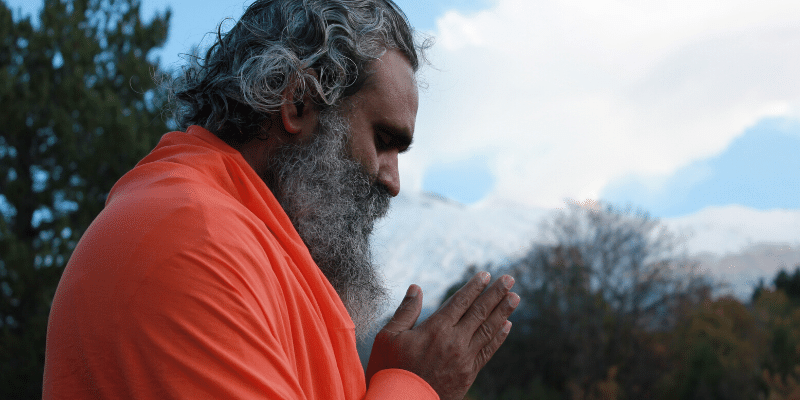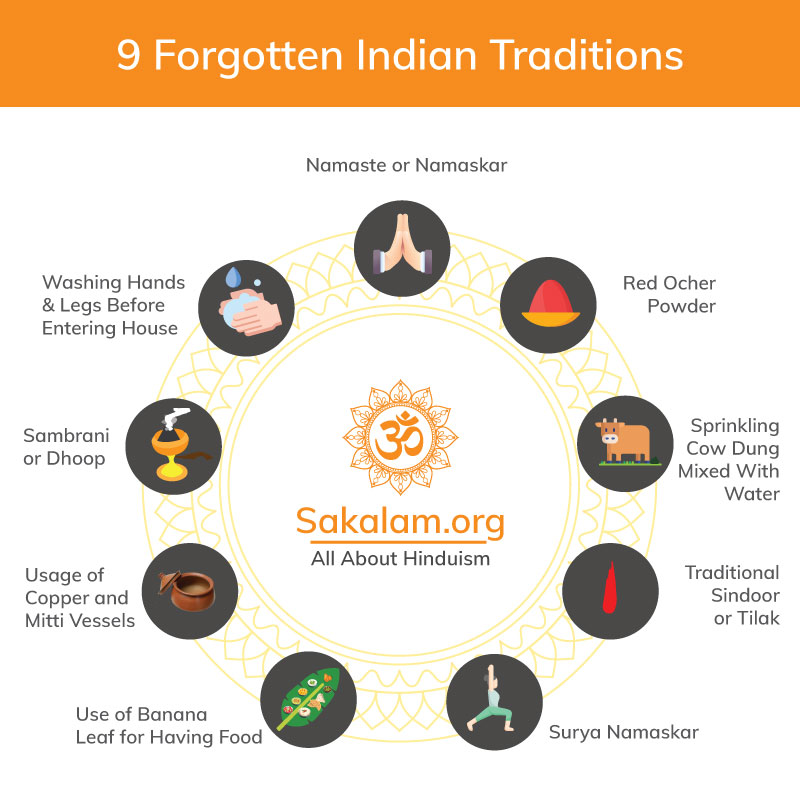India is widely known for its culturally diverse people and traditions. The country had a wonderful past with several mentions in the historical scripts.
Most of the books on Indian History have comprehensive work on Indian culture and traditions. Now, when it comes to traditions, they are something we are born with.
Our ancestors have introduced traditions to us which we respectfully agreed to believe. There exists a compelling picture of our Indian heritage right in front of us.
Not to forget, Indian traditions are just not for ritual practices but also have scientific benefits attached to it.
However, the cruel irony is that as time passed by, with the hustle and bustle of life, we tend to get away from these traditions.
Indian society is a culmination of various customs, cults, sects, and rituals. But with due acceleration in time, important traditions are left out and we somehow have resorted to mechanical life.
Let us explore some of the age-old Indian Traditions that we have forgotten.
1. Namaste or Namaskar

Namaste or Namaskar in Indian tradition is about honoring a person while meeting the person in real. Also, spiritually during prayers, Hindus perform namaste to acknowledge the blessing of the almighty upon their life.
It is a gesture with a slight bow, two palms pressed together. Also, called as Anjali Mudra, it has a meaning in Hinduism which means “I bow to the divine in you.”
This gesture has significance in terms of physical science. Joining both the hands and aligning the tips of all the fingers together activates the pressure points of eyes and ears that are associated with memory.
2. Washing Hands & Legs Before Entering House
Washing hands before entering the house is considered a Hindu personal hygiene practice. It has a great scientific benefit attached to it.
Most of us while travelling around happen to take up germs in our body. Thanks to the surrounding dirt, this age old Hindu tradition is a good way to remain healthy and hygienic.
It is related with external cleansing that helps to eliminate foul odor.
These are some of the age old Indian Traditions which we have almost forgotten to apply in our lives. Most of them have the scientific reasons to validate their importance.
It’s time we go back to those and try to lead a simple, healthy and happy life.
3. Sambrani/Dhoop
Sambrani, Dhoop, Loban different names in different regions. It has been used since centuries in India in traditional, spiritual and religious ceremonies.
It is made up of Benzoin Resin, which is antiseptic and finest energy purifier and it has a great influence on cleansing an area. Also it helps in unblocking the human body energy meridians.
Burn a Dhoop and offer to deity on daily puja and take the Dhoop to spread it in the entire house was a regular activity in olden days. Farmers used to spread in the backyard and animal sheds to remove negative energies that surround the environment.
It is a natural and pure pest repellent and also believed that it works for emotional balance, eases sadness, depression, weariness, grief, anger, anxiety and to attract prosperity.
4. Usage of Copper and Mitti Vessels
According to Ayurveda, water which is stored in a copper vessel can stabilize your mind. It takes care of the three doshas in the body namely Vata, Kapha, and pitta, thereby bringing positive change to the entire mind.
Copper is a ductile metal that has high electrical and thermal conductivity. It can destroy bacteria and viruses can kill every possible bacteria causing food poisoning.
Ancient yogis in India used to carry a copper vessel known as Kamandal for drinking water. This Tamra Jal(copper water) helps them to delay the ageing process of the body.
5. Use of Banana Leaf for Having Food
Banana leaves contain polyphenols, a natural antioxidants. Food served on the banana leaves absorbs the polyphenols which prevent many lifestyle diseases. And these are ecofriendly and hygiene.
In India, most of the southern states still serve food on a banana leaf.
However, nowadays people have resorted to using plastic plates which have no nutritional values and have a huge environmental impact.
In most of the cuisines of Africa, Asia, and South America banana leaves are used as wrappers to keep meat, fish, rice, moist during cooking.
6. Surya Namaskar
Surya Namaskar is one of the well-known asanas of yogic practices. It directly targets your legs, stomach, throat, and liver. With proper interpretation of Surya Namaskar, you can have proper circulation of blood.
The best time to perform Surya Namaskar is before 6 AM. The stomach needs to remain empty and one should wait for 15 minutes after drinking water.
Sun Salutations(Surya Namaskar) is a great way to rejuvenate your inner self in the morning. This particular gesture can help you strengthen your physical body. However, nowadays not many people are performing this owing to their hectic work schedules.
7. Traditional Sindoor or Tilak
Sindoor is a traditional red powder made up of vermillion. It is a symbol of matrimony for women who are married.
Also, traditional Tilak ceremony is the one where it is applied before the soldiers or the warriors went out for war.
Scientifically Sindoor contains turmeric, lime, Ash from a sacrificial fire (a mixture of various dried herbal, roots, leaves and cow dung cakes will be used), sandalwood paste, clay, charcoal, or red lead and a little bit of metal mercury.
It is believed when it is applied; it cools down the body for better relaxation and also works as antibacterial.
8. Sprinkling Cow Dung Mixed With Water
The water that is sprinkled in front of the house is mixed with cow dung according to Indian tradition.
It helps in purifying the air by killing the unwanted insects. Also, dried cow dung is known as Dung Cakes and used in Homas.
Cow dung is also used to create Bio gas which is an alternative to fossil fuels.
9. Red Ocher Powder
Indian traditional festivities can never go without Red Ocher. It has different names in regional languages like Geru, Geru Mitti, Gairika, Kavimannu, Girimati, Hojatha, Kaavi, Kasayakkal, Sonakava or Jaaju.
It was used to decorate the entrance of house, even sometimes used to decorate the entire house. During the festivals like Diwali, Onam, Pongal, also on the marriage events it will be applied on the floor, to welcome positivity and good luck.
It is mostly drawn on the entrance so that guests while entering sense positive and happiness around.
As per Ayurveda there are many uses for the eye diseases, bleeding disorder, hiccup, vomiting, itching, burning sensation, abdomen diseases and skin allergies.

